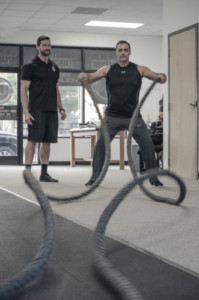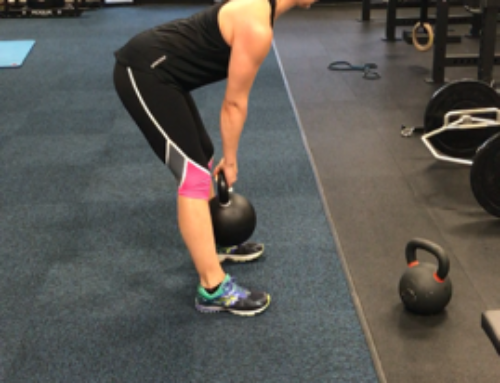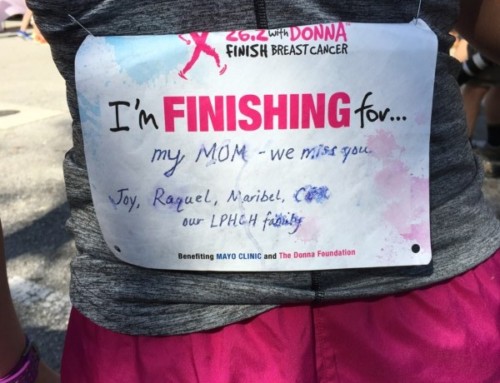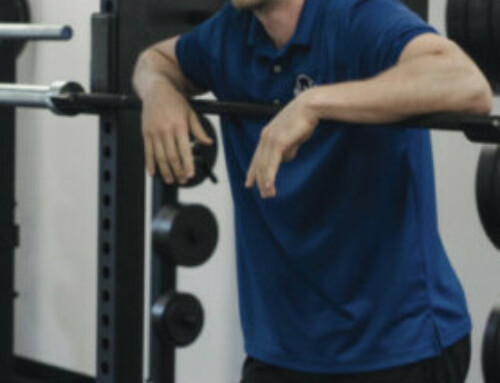This is a question you should always know the answer to. You can be giving 100% effort in the gym, but if your program isn’t specifically designed to help you meet your exact goals, then you will simply not get the results you are after.
The first step to this is to nail down exactly what your goals are. The most common scenario is someone saying “I want to lose weight, add muscle, increase my overall health, and run a half marathon.” This is the first problem. The bad news is unless you are very new to working out and eating healthy, or you are a teenager you just can’t do all of these things at once. The bottom line is you must pick one main goal that you want to accomplish, the one that is most important to you. If you have a second goal, remember that goal must be realistic based on your first goal. For example, if your goal is to lose ten pounds, then dropping 2 dress sizes would still be possible. However, losing 10 pounds and adding 50 pounds to your squat may not be a good idea due to being in a calorie deficit and that calorie deficit not being the best state to be adding tons of strength.
Remember the acronym S.M.A.R.T. when setting your goals. This has been around for a long time and still stands.
S: Specific– i.e. I want to lose 10 pounds; not I want to lose weight
M: Measurable– The above goal is measurable. Setting goal numbers would also be a good example of something that is measurable.
A: Attainable– Working out every day may not be attainable for the parent with a full time job, three kids, and an hour commute. Set a goal that you can achieve.
R: Realistic– Set a goal that is reasonable for you. Achieving 8% body fat may not be realistic, but maybe 15% is. Set the goal that is realistic for you and your lifestyle (work schedule, family, available time, etc).
T: Timely– You must set a time frame you want to achieve your goal by. “I want to lose 10 pounds by December 20th.”
Once you have your primary goal set, now you have to take a look at your program. You may be participating in group fitness classes, working out on your own or with a personal trainer. Whatever the case may be, make sure that the exercise program lines up with your primary goal. Here are a few guidelines to look at to see if your current program is going to help you get the goals you’re after.
If your goal is to lose fat:
1- How many days a week are you working out?
No matter how high the intensity is during your workout, if you are working out only 1-2 times a week you are most likely not going to get the fat loss results you are after. Strive for 3-5 days each week, even adding in something not as stressful on your off days such as walking or swimming.
2- What exercises are you performing?
Does your program have you balancing on one leg performing bicep curls? How about let’s have a contest to see who can hold the longest plank!? These are both examples of something that seems challenging, but first of all whats the point? Please ask your trainer what the point of holding an hour plank is? Is there not something more productive you could do with your time? Second of all, you should be performing mostly compound movements (multi-joint). These include squats, lunges, push-ups, pull-ups, rows, overhead presses, etc. Not that balancing on a bosu ball is easy, but the thing is every single exercise you do should help you get one step closer to your goal. Are dumbbell curls ok? If one of your goals is bigger arms, then sure, but after you have done all of the compound movements.
3- How long are your rest periods?
Longer rest periods have their place when your goal is to improve your one rep max on a particular lift. However, when fat loss is the goal you should not be resting 5 minutes between lifts. Pairing pushing/pulling or upper/lower body exercises with little rest in between exercises are great ways to maintain strength and burn fat. Rest periods should be kept under a minute as a general rule. If you have one major lift you are trying to maintain or improve strength on, resting longer to keep strength at the beginning of your workout is fine. Just make sure the rest of the workout is shorter rest periods and follows rule number one.
4- Is your program centered around a cardio activity?
Yes, cardio has its place. That place is after weight training or on off days of weight training. Do not fall for gimmicks. If you want long lasting health, including pain free joints, doing entire classes of box jumps, burpees, boxing, and stadiums probably isn’t what your program should be based on. I can’t even count the amount of people I know who have gotten hurt doing this style of training. Remember the key to reaching your goals is consistency. Getting hurt and sitting out a month or two is not being very consistent. I know all of these exercises are fun (except burpees), and I do include some of these activities in my clients programs. Just make sure that it is not the basis of your program. A healthy combination of resistance training and high intensity interval training is the combination you’re after.
If your goal is to build muscle:
1- Are you using the rule of progressive overload?
The quote “If you do what you’ve always done, you’ll get what you’ve always gotten” stands true here. If you are using the same weights you have been using for months or years and completing the same amount of reps, ask youself this question, “Why would my muscles grow?” This stands true for whatever your goal is. Progressive overload is probably the biggest rule to follow to ensure muscle growth, besides nutrition which is covered later. You must progress in amount of weight or amount of reps with the same weight in order to grow.
2- How many reps are you doing per exercise?
There are some general rules that were around years ago and they still haven’t really changed. If your goal is muscle mass, you should be performing reps in the middle rep range. Between 6-12 reps seems to be a great range to build muscle. Lifting in the 1-5 rep range will add strength and doing higher reps in the 12-20 range will add muscular endurance. There are exceptions to this, but for this article we won’t be diving into all of the exceptions. I want to make sure the main points are covered first. I do feel that it is good to do some reps in the lower ranges as well to maintain and improve strength. This should be done first in the workout when the muscles are fresh to ensure you can lift the heaviest weights possible.
3- Are you allowing time for recovery?
If you are lifting hard Monday through Saturday you are probably not giving your body enough time to recover. Remember, your muscles grow after the workout not during the workout. However, to do this you must be getting adequate sleep (7-8 hours minimum), proper nutrition and days off of heavy lifting. A good place to start is 3-4 days a week of weight training. See how your body is recovering and then adjust from there. Active recovery is always better than sitting around and doing nothing. Foam rolling, mobility, and some light intervals are great ways to speed recovery.
Does your daily intake match your goals?
This may be the most important aspect of all. It doesn’t matter if you follow every other guideline to the letter. If your goal is to lose fat, you must burn more calories than you consume. If your goal is to build muscle, you must consume more calories than you burn. There’s very little getting around this. Do not waste your time working your hardest in the gym and then not consuming the correct amount of calories for your goal. A general guideline I have found to be helpful is to consume 10-12 calories per pound of bodyweight if your goal is to lose weight, 12-14 to maintain, and 14-16 to gain. You can adjust based on the progress you are or are not making.
Another great tool to take advantage of is an app such as myfitnesspal. Simply enter in your current weight, goals and activity level and it will do the math for you.
Ask yourself if your current program is in line with your goals. If they are not lining up, talk to an expert to discuss your goals and to set up a plan to ensure your fitness journey is a success.
Jonathan Brawley, NASM-CPT, LN Personal Trainer







